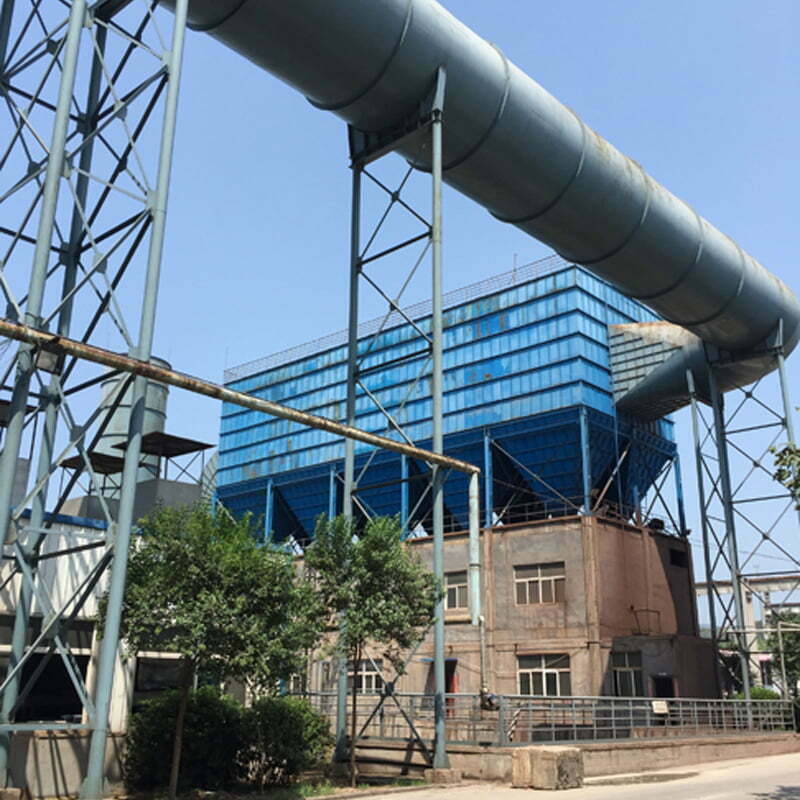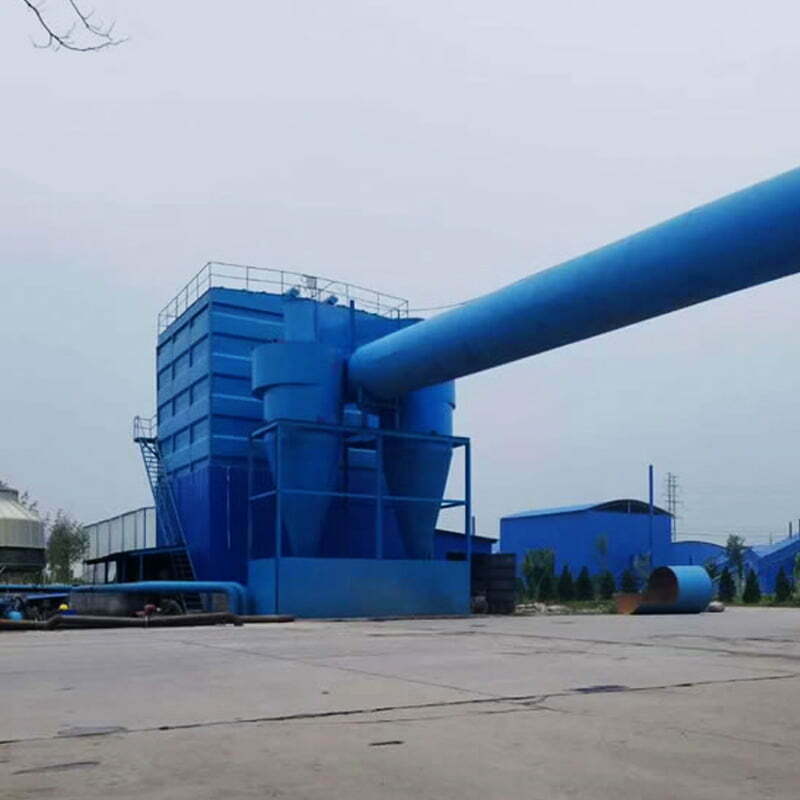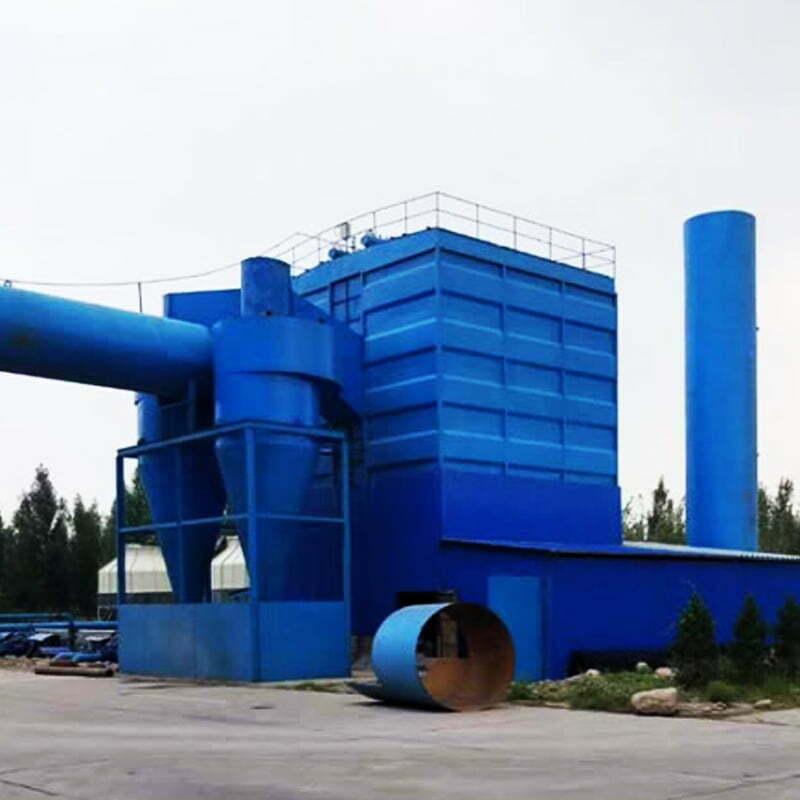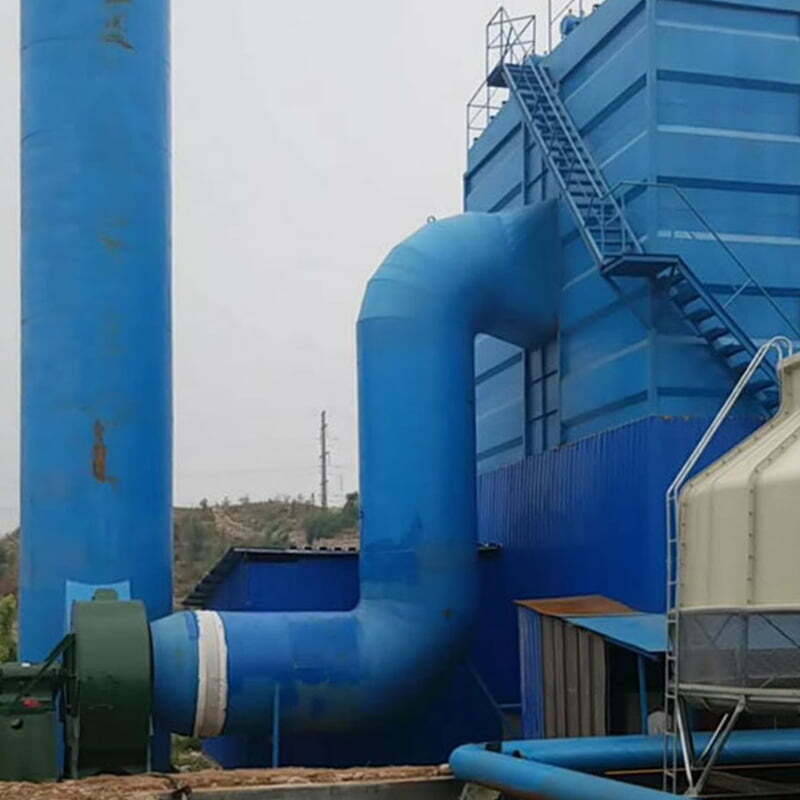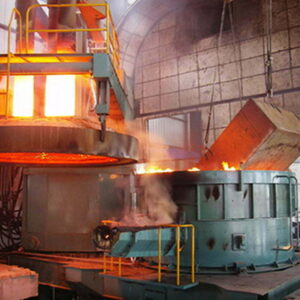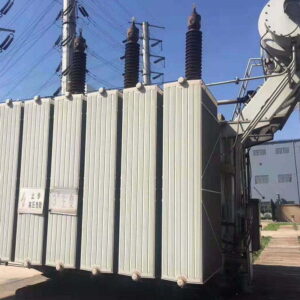Description
SAF dust removal system working principle is that the flue gas from the calcium carbide furnace, submerged arc furnace and ferrosilicon furnace first enters the air cooler, and is fully cooled by the air cooler to the temperature range that the bag filter can withstand, and then enters the bag pulse filter.
The flue gas after dust removal is discharged from the chimney of the induced draft fan up to the standard, and the dust is discharged from the ash hopper.
The successful application of the technology used in dust removal equipment has changed the traditional negative pressure filter type dust collector with large investment, large equipment volume, insufficient cleaning effect, and high equipment operating resistance.
Pulse cleaning method bag filter is used in silicon iron ore furnace.
Characteristics of SAF Dust Removal System
1. The dust removal system of the submerged arc furnace has a good cleaning effect.
The cleaning effect is the key factor for the use of the dust collector. The equipment adopts a large-diameter submerged straight-through pulse valve, which has small injection resistance and low air pressure.
Powerful and thorough cleaning, good effect. The pulse valve diaphragm used is a Sino-US joint venture technology with a service life of 1 million times.
2. The dust collector is easy to maintain.
The device adopts the upper cover structure, that is, when the upper cover is opened, the filter bag frame can be pulled out to change the bag.
The service life of the filter bag is 18-24 months, and the glass fiber filter material is generally 8-12 months, and the maintenance period is relatively prolonged. Operating costs are relatively reduced.
3. The SAF dust removal system has low investment and small footprint.
Compared with the glass fiber filter material, the new composite filter material selected by HANI has significantly improved wear resistance, folding resistance and peel strength.
That is, it can withstand high temperature and increase the filtration wind speed, which is twice that of the glass fiber filter material, and correspondingly reduces the filter area of the dust collector, which is half of the filter area of the glass fiber filter bag filter.
The weight of the device is 50% lighter. The purpose of reducing investment costs and reducing floor space is achieved.
4. Adopt negative pressure SAF dust removal system.
The main fan is in a clean airflow working environment, the blades of the main fan don’t need to be cleaned and maintained, and the fan runs relatively stable.
Principle
Due to the high outlet temperature of the flue gas of the ferrosilicon electric furnace with a short hood, a U-shaped air cooler is required to cool the flue gas.
The flue gas discharged from the electric furnace is cooled down by the air duct and the U-shaped air cooler. At the same time, the U-shaped air cooler plays a role in secondary sedimentation and classification of dust.
At this time, the temperature drops from 800°C (extreme 9500°C) to about 250°C, and then enters the processor to further settle and classify the dust contained in the flue gas and reduce the flue gas temperature.
The temperature of the flue gas entering the cloth dust removal system is 180-230 °C (stable working environment is an important factor for the service life of the filter bag).
The surface is captured, and the purified flue gas is discharged into the atmosphere from the air outlet on the upper part of the filter bag filter box.
When the operating resistance or time of the equipment reaches the set value, the ash cleaning process starts, and the dust from the reverse suction and ash cleaning falls into the lower ash hopper of the unit filter room, and is discharged by the ash discharge valve, and then passes through the screw ash conveyor to the lower ash port for loading. bag.
Remember, since the electric furnace is a high-energy-consuming production equipment, there is a lot of heat remaining in the flue gas and the flue gas temperature is high, so cooling measures must be taken.
Therefore, choosing a SAF dust removal system with good quality and satisfactory effect is also a key part of smelting.
Contact HANI to get you a good solution for the SAF dust removal system and the smelting furnace.
SAF Type & Service
HANI Metallurgy is a SAF China manufacturer with rich experience in production and export.
We can design and manufacture furnaces with the appropriate power according to the specific needs of our customers.
Types of furnaces
SAF is mainly used for reduction of raw materials such as smelting ores, carbonaceous reducing agents and solvents.
It mainly produces ferrosilicon, ferromanganese, ferrochrome, ferrotungsten, silicomanganese alloy and other ferroalloys.
The following models are in high demand by users.
16500KVA industrial silicon, 12500KVA silicon-aluminum furnace, 16500KVA silicomanganese furnace, 16500KVA ferro-nickel furnace, 33000KVA ferrosilicon furnace, 33000KVA ferrosilicon furnace, 25500KVA ferrochrome furnace, 8000KVA industrial silicon furnace
Services
HANI Metallurgy can provide “turnkey” services for technical solutions, production line design, plant layout, equipment manufacturing, installation and commissioning of relevant projects.
We can also design, manufacture, modify and upgrade your existing production equipment according to your requirements.
We will send our engineers to your factory to install and commission the machines and provide reliable after-sales service.
Our machines are easy to operate and maintain.
Production capacity can be adjusted according to customer requirements.
We supply complete plants as well as individual plants such as furnace shells, furnace covers, furnace liners, short grids, water cooling systems, fume extraction systems, dust removal systems, electrode shells, electrode press and lift systems, loading and unloading systems, grippers, burn-throughs, hydraulic systems, transformers for mineral-heating furnaces and various auxiliary equipment and accessories.

